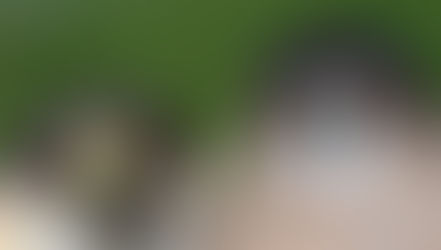What do ducks eat? - Learn the diets of dabbling and diving ducks
- Zach (Head Flocker)
- Oct 28, 2024
- 4 min read
This commonly asked question has a variety of answers. However, one answer we can offer with certainty is: DO NOT FEED BREAD! Now, learn the different foods wild and domestic ducks eat.

If you want answers to more questions like these, join our flock!
When it comes to ducks, food choices are often dependent on their feeding practices. In the birding world, ducks are either referred to as a dabbler or a diver, based on how they feed. Dabbling ducks often feed out of the water, but when they feed in the water, they tip forward, sticking their butts up in the air. Diving ducks frequently dip under the surface of the water, looking for food items.
We will break down some of the major food types for each of the diving and dabbling feeding types. If you want to learn more about a handful of duck species, check out our Top 5 Ducks!
As an Amazon Associate, we earn from qualifying purchases.
Links may lead to affiliate sites.
Learn waterfowl identification with this Crossley Guide!
What do dabbling ducks eat?
Dabbling ducks include the Mallard, teal, Gadwall, Northern Pintail, and wigeon. Gadwall have a diet of mostly vegetation, focusing on aquatic plants and seeds. During the breeding season, some Gadwall eat aquatic invertebrates. Teal and shovelers eat swimming invertebrates such as insects and their larvae, mollusks, and crustaceans. They also eat seeds and other plant material, but like the Gadwall, animal material makes up the majority of the diet while nesting. The Wood Duck, while not a dabbling duck, is known to eat fruit in addition to seeds and invertebrates.

However, the most important diet, as it relates to this often asked question, comes from the Mallard. Mallards are omnivorous and eat mostly animal foods, including insects such as midge larvae, dragonflies, and caddisfly larvae, other aquatic invertebrates such as snails and freshwater shrimp, with the occasional terrestrial earthworm. During the nonbreeding season, the Mallard's diet predominately consists of seeds from moist-soil plants, acorns, aquatic vegetation, or ag crops like corn, rice, barley, and wheat. Leftover grains and other ag foods usually dominate the Mallard's diet during fall migration and often during winter, depending on the relative availability of natural versus agricultural foods. During the winter, urban Mallards often rely entirely on human-provided food, such as bread or seeds. Why is the Mallard's diet so important? Keep reading!
Dabbling ducks have a wide variety in their diets, with Mallard's having the greatest variety. Dabbling ducks eat a lot of plant material, like seeds and fruit, and aquatic invertebrates, with some species taking advantage of crops like corn, rice, and wheat.
A spotting scope is a must for proper waterfowl enjoyment!
What do diving ducks eat?
Diving ducks include the scaup, mergansers, eiders, goldeneye, and scoters. Lesser and Greater Scaup consume both animal and plant matter. The proportions they consume are dependent on the season and availability. Included in the animal portion of scaup diets are small bivalves, snails, crustaceans, and aquatic insects and larvae. The plant matter they consume consists of seeds and vegetative parts of aquatic plants. The mergansers are far more specialized in their diet selection, with long, serrated bills used for catching fish. Mergansers may eat small fish primarily, they will also consume insects, mollusks, crustaceans, worms, frogs, small mammals, and birds. Plant material is a very low percentage of a merganser's diet.

Eiders and scoters have diets that are mostly mollusks with crustaceans, echinoderms, other marine invertebrates, algae, and some plant matter. The diet varies from species to species and season to season, but mollusks, especially bivalves, are critical to both groups. Goldeneye also share a similar diet to the eiders and scoters. Goldeneye consume mostly aquatic invertebrates like insects, mollusks, and crustaceans, but also consume vertebrates such as amphibians and occasionally small fish or spawn. All three species groups consume some vegetation matter, but it is only a small part of their diet.
Capture your own duck pics with the RX10 IV!
What do domestic ducks eat?
This is where this article gains interest! Almost all domestic ducks originate from the Mallards, except those sourced from Muscovy Ducks (and maybe a few others). So, if you came here to learn about diets for domestic ducks, you need only review the diets of the dabblers! For those who do not wish to backtrack, I will make it easy. To reflect their Mallard ancestors, domestic duck diets should consist of a significant number of seeds such as corn, rice, barley, and wheat. While wild Mallards may eat a lot of animal matter, some animal matter may be difficult to find and provide. Dried mealworms will offer some level of animal material for your domestic ducks. Providing some natural habitat will also offer invertebrates and plant life to supplement domestic fowl.
Add animal protein to your domestic duck's diet!
The diet of a duck
There are over 40 species of duck in North America, and while many of them share similar habitats and behaviors, their diets vary widely. If you came to this article in search of answers for domestic ducks, hopefully, you have learned one or two things. If you came here to learn a little more about your favorite dabbling or diving duck, you might have gained some insight into how their behavior influences their food selections.

Want more tips on birds, feeding birds, identifying birds, wildlife safety, and more?? Join our site, subscribe to our Flocking YouTube, like us on Facebook, follow us on Instagram and Twitter, and visit our Amazon Storefront.


















